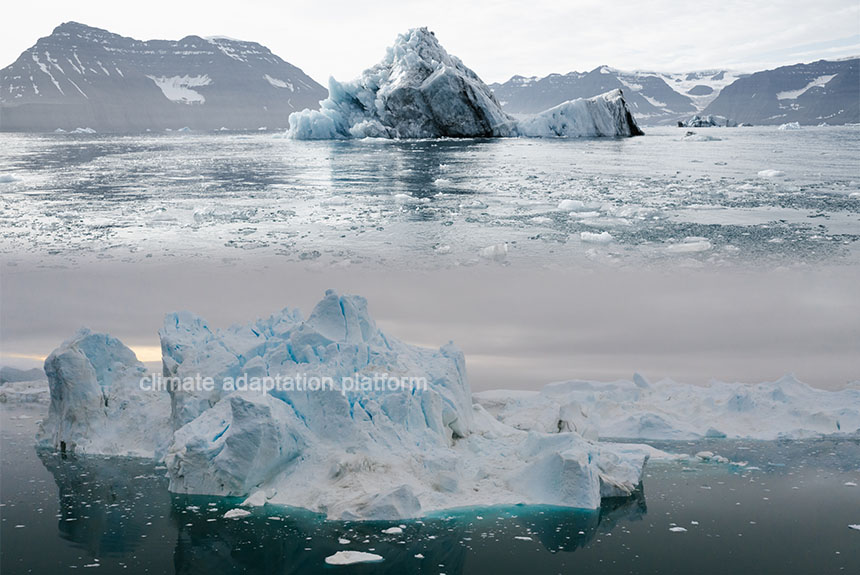Satellite records reveal that Antarctica has the lowest recorded sea-ice level this winter of 2023. Scientists with the National Snow and Ice Data Center, which monitors sea ice, say that the amount of missing sea ice this year is “mind-blowing” and warn that an unstable Antarctica will have far-reaching consequences for the global climate.
A report from the BBC says that the ice currently floating on the surface of the Antarctic Ocean measures less than 17 million square kilometres — 1.5 million square kilometres of sea ice less than the September average and significantly below previous record lows during winter.
The missing ice area is roughly five times the size of the British Isles or about five and a half times the size of New Zealand.
The polar experts told the BBC that the South Pole’s huge ice expanse regulates the planet’s temperature, as the white surface reflects the Sun’s energy into the atmosphere and cools the water beneath and near it. The experts say that without ice cooling the planet, Antarctica could transform from Earth’s refrigerator to a radiator.
Furthermore, sea ice depletion exposes more dark ocean surfaces, creating a chain effect. The bigger the ocean surface, the more of the Sun’s heat it absorbs, warming the sea faster and melting the ice – an effect known as the Ice-Albedo feedback.
According to NASA, “albedo is a measure of the reflectivity of the Earth’s surface. The ice-albedo feedback is a strong positive feedback in the climate system. Warmer temperatures melt persistent ice masses in high elevations and upper latitudes. Ice reflects some of the solar energy in space because it is highly reflective. If an equivalent area of ice is replaced by water or land, the lower albedo value reflects less and absorbs more energy, resulting in a warmer Earth.”
Scientists are still trying to figure out the causes of the Antarctic’s disappearing sea ice this winter and suggest that the year’s record-warm oceans, changes in ocean currents and winds that drive the continent’s temperatures, and the El Niño weather phenomenon, currently developing in the Pacific are factors that they think contributed to the shrinking sea-ice.
Dr Robbie Mallett of the University of Manitoba, who is based on the Antarctic peninsula, said there are “very, very good reasons to be worried. It’s potentially a really alarming sign of Antarctic climate change that hasn’t been there for the last 40 years. And it’s only just emerging now.”
The Antarctic and Southern Ocean Coalition shows the parts of the Antarctic that are losing ice and explains why some areas are losing ice faster than other areas of the continent and the impacts of depleting sea ice.
According to the article, in areas that are seeing rapid growth of sea ice, it is due to substantial snowfalls (an increase of several inches, or around 20 cm per year) caused by disruptions in the climate. The West Antarctic Ice Sheet is undisputedly where ice loss is increasing and accelerating.
Warming ocean temperatures are causing the ice shelf to melt from below. Around the Antarctic coastline, warm, deep-water currents are flowing beneath ice shelves, melting them from below. This makes ice shelves thinner, weaker, and more vulnerable to breaking apart (Rising Sea Levels, 2023).
Rising sea levels are one of the impacts of melting polar ice caps and sea ice, and this could impact low-lying communities by contaminating freshwater sources. Saltwater can move onto the land and farms, known as saltwater intrusion and flooding. The article says that a modest sea level rise of only a few feet would displace the roughly 230 million people living within about 3 feet of the high tide line today.
Sea level rise projections
The 2021 Intergovernmental Panel on Climate Change (IPCC) Report predicted sea levels will rise between 0.18m to 0.23m (0.5 foot to 0.7 foot) by 2050 and between 0.38m to 0.77m (1.2 feet x 2.5 feet) by 2100.
A 2022 report from the National Aeronautics and Space Administration (NASA), National Oceanic and Atmospheric Administration (NOAA) and other U.S. government agencies predicted sea level will rise to a foot (0.3 meters) by 2050, prompting international concern.
Source:
Rannard, G., Dale B., & Rivault, E. (17 September 2023). Antarctic sea-ice at ‘mind-blowing’ low alarms experts. BBC. Retrieved from https://www.bbc.com/news/science-environment-66724246
Rising Sea Levels (2023). Antarctic and Southern Ocean Coalition. Retrieved from https://www.asoc.org/learn/antarctic-ice-and-rising-sea-levels/



Leave a Reply